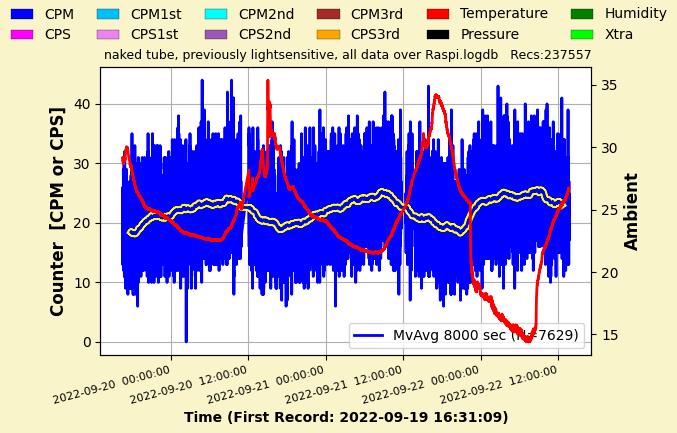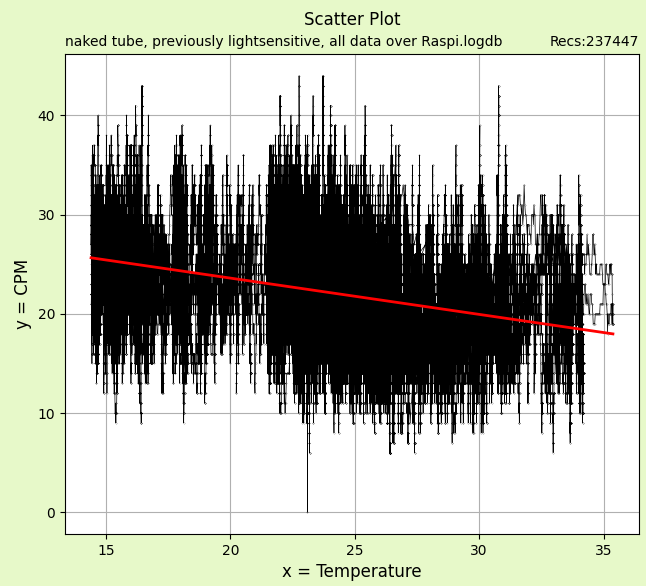The environment can be so mean to Geiger counters, first it is the light, now it is the temperature.
I have tested my next GeigerLog version using a Raspi as a WiFiServer. The Raspi was serving counts from a GMC-500+, and temperature from an I2C sensor, all via WiFi. Counter and devices were put at a place in my home, where the temperature changes at least 10 °C over the day (near the window), measuring background. This is what happens on the 3 day recording:

Blue is the Geiger counts (left scale), red is the temperature in °C (right scale). The thin double yellow lines mark the Moving Average of the counts.
It is easy to see: the counts are not constant, they move up and down, and the Moving Average is well anti-correlated with the temperature.
GeigerLog offers the "Scat" function, which draws a scatter plot. Here for Temp on the X-axis, and CPM on the Y-axis, with a linear fit as a red line:

There is a very clear correlation. Where does it come from?
Daily flybys of alien spaceships?
As the pressure inside the tube will increase with temperature (as the ideal gas law says), I'd be not surprised if this pressure change results in changing count rates.
But is the tube really to blame, or is it perhaps the electronics of the counter? The counter electronics needs to discriminate count pulses from electric noise pulses, and this may be depending on temperature?
|

